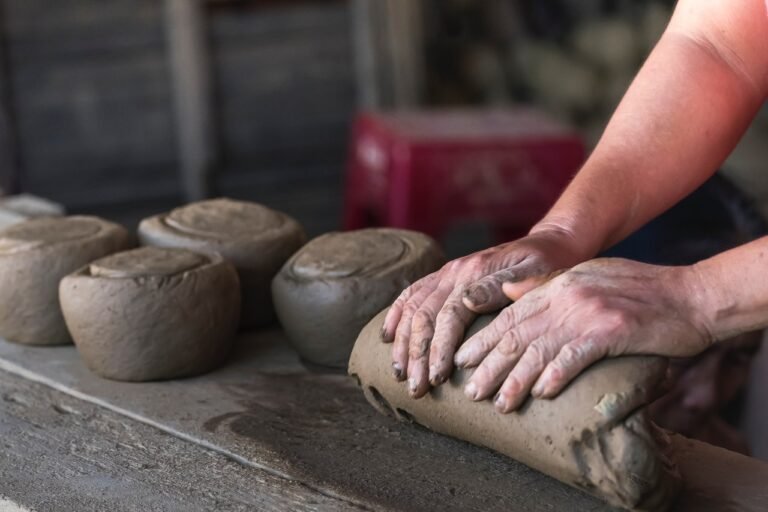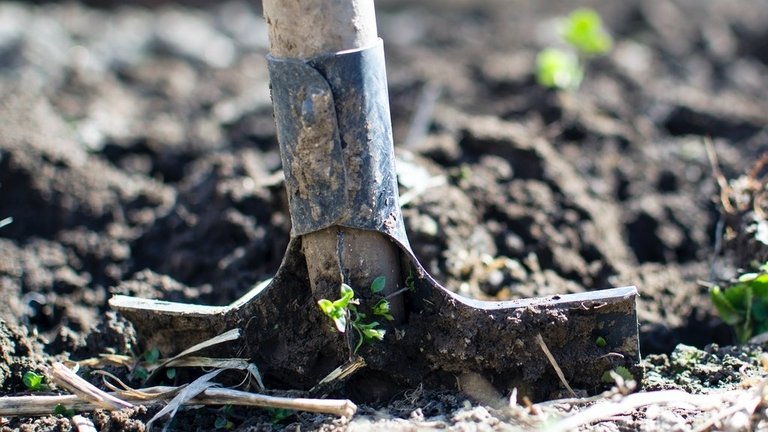How to Soften Clay? (Step by Step Guide)
When clay is exposed at room temperature for a long time or has stayed outside of the original package long after being bought, it tends to become hard and difficult for molding into different shapes or objects. But is it possible to reuse your clay or you need to buy a new one? In this article, we will show you what to do if your clay gets harden and the list of methods how to soften clay!
Hard clay can be softened to desired softness using different methods. Air-dried clay and pottery clay can be softened using water while polymer clay is best to soften using oil. Next time your clay hardens, be sure to use one of these methods to soften it and your clay is back to life.
Clay can be softened using any of the above methods based on the clay type and the desired softness.
These methods when followed accordingly will help you soften your clay to be used effectively. In this article, we’ll be discussing various steps involved in how to soften the clay.
How To Soften Pottery Clay?
Pottery clay is a naturally occurring clay found in the ground and used for pottery since time immemorial. It is also referred to as earthen clay. As a result of prolonged exposure to air this clay can be dehydrated but if you follow these steps, it can be softened again:
- When the clay is stone hard and is unworkable for hand modeling , use a mallet to break the clay into powdery form.
- Apply water a little bit at a time while kneading it to avoid being mushy.
- Continue to knead the clay until it is workable.
Alternatively:
- You could also fill the powdered clay with water in a container and leave for about 2-3 day
- You will notice if it becomes mushy, drain the excess water.
- Leave the residual mushy clay and spread it on a flat surface outside to reduce the water content in the clay.
- Check continuously to avoid getting dried and making it difficult to work it
- After it has been examined and can be worked with, it is time to store it properly.
- Mold into the desired shape or keep in a Ziploc bag to prevent hardening again
How To Soften Modeling Clay Quickly?
Modeling clay is characterized by its drying and malleable property, which is responsible for its ability to be shaped into the desired form. We have different types; the air-dried modeling clay, which can be hardened when exposed to air as a result of the presence of water in its constituent, and polymer clay, another example of air-dried modeling clay. This modeling clay can be softened using a moisturizer.
The following are steps to harden a modeling clay.
- Apply a moisturizer to the clay to be softened, with size varying based on its hardness and how soft you want it
- Knead the clay continuously, as you are kneading the dough until you achieve your desired softness.
- Using a kitchen wipe or baby wipe, clean your hand properly.
Alternatively, you can soften modeling clay by applying heat to increase the temperature of the clay using a hand dryer. Set the dryer at low temperature and place at about 3-5 inches above the clay and move the dryer over the clay in a rotational manner until the clay is heated. Knead the clay using your hand until you achieve the desired softness.
How To Soften Polymer Clay?
Polymer clays are synthetic, made from polyvinyl chloride, and called clay because of their clay-like properties. As a result of the chemical used in making this clay, it requires something more than water to softened and make it workable.
Softening polymer clay can be achieved using ingredients like Sculpey which sometimes comes along with polymer clay and is made to soften polymer clay. Vaseline, baby oil, liquid clay, etc. are also used to soften polymer clay. Using Vaseline to soften polymer clay, the following are the steps you should take.
- Flattens out your clay to increase its surface area.
- Depending on how hard the clay is, apply Vaseline or petroleum jelly on the clay or insert the clay in the Vaseline to ensure it’s completely covered with it
- Continue to work the clay until you get your desired result.
- Use a kitchen wipe or baby wipe to clean your hand after working with the clay.
You can also soften polymer clay by increasing its temperature either by keeping it in a warm environment for a long period or by continuously kneading it for some time until it becomes softened. If clay becomes too soft, you can either put it in the fridge to stiffen it or simply add raw clay, and continue kneading until you get your desired softness.
Can I Use Olive Oil To Soften Polymer Clay?
Generally, diluent or oil is used for softening dehydrated clay. There are different oils used for softening such as mineral oil, baby oil, oil-based clay softener Sculpey, etc. Olive oil and coconut oil can also be used for softening clay because of their moisturizing effect which when kneaded softens the clay and makes it soft enough and workable. Olive oil is only suitable for softening oil-based polymer clay and should be applied with care by adding a few drops at a time because adding too much olive oil can make it becomes too soft, rendering it unusable.
The following are the process involved in softening polymer clay using olive oil:
- Add olive oil a drop at a time according to the size of the polymer clay
- Start kneading the polymer clay carefully and add more olive oil in drops if it’s still hard and unworkable
- Keep knead until you get your desired softness
Olive oil can also be used to smoothen the surface of the polymer clay by brushing the oil over the clay to eradicate fingerprints from the clay.
How To Soften Air-dried Clay?
When clay is exposed to air for a long time, it becomes hard and it is losing flexibility. The easiest way to make the clay workable and rehydrated is to follow steps as described and our clay will be soft and ready for crafting.
- Take a Ziploc bag or any other airtight bag with no holes.
- Make holes in the clay using a knife, to ensure quick absorption of water.
- Keep the clay in the bag and add water depending on the quantity and softness you want to achieve.
- Seal the bag and shake the bag a little bit
- Leave it for a day
- After 24 hours take it out of the bag and put it in the bowl
- Knead the clay with your hand or roll using a rolling pin
- Use a kitchen wipe or baby wipe to clean your hand after working the clay
Can You Put Clay In A Microwave To Soften It?
Polymer clay can be softened using a microwave. Although when used in the microwave for a prolonged time it tends to release harmful gases into the microwave making it unsafe for use in making food. It is advised that the microwave is thoroughly washed and exposed to air for about two hours before it can be used for food. Clay can be softened in the microwave using the following steps:
- Using a knife, cut the clay into pieces, to allow even distribution of heat
- Check continuously at 10 seconds intervals to ensure the desired softness.
- Remove the clay from the microwave and transfer it to a work surface
- Tape parchment paper to the surface before kneading the clay to avoid being messy. Knead the clay continuously until it’s workable.
- Use a kitchen wipe to clean your hand after working the clay.
Whenever your clays gets harden just follow simple solutions mentioned above and turn your clay to a soft mass ready for making nice art pieces.







